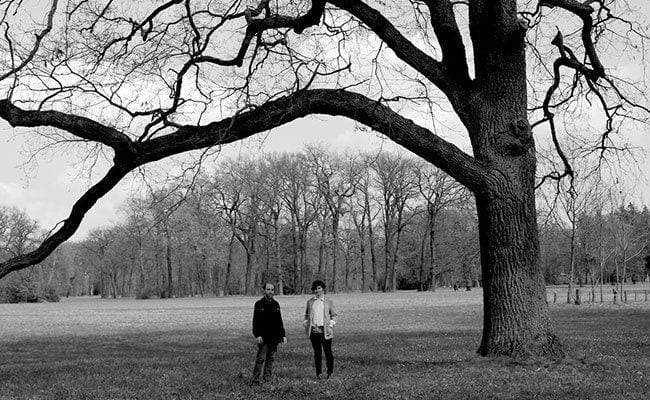
Nadja’s music is a paradox. In terms of texture and mood, the experimental duo conjures something that behaves like ambient music. In execution, this very same music has more to do with the metallic side of post-rock than anything your run-of-the-mill ambient musician might attempt. Guitarist/vocalist Aidan Baker and bassist Leah Buckareff use the Nadja name to run their own drone marathons, ones that can out-drone and out-distort the mopiest of shoegazers. When these two plug in and press record, they do so for the long haul. The Stone Is Not Hit By the Sun, Nor Carved With a Knife, Nadja’s first album on the Gizeh label, contains only three tracks yet lasts almost 80 minutes. The second “song” could be considered an album unto itself.
The Stone Is Not Hit By the Sun, Nor Carved With a Knife keeps an eye out for structure, but leaves itself enough wiggle room to shape it in its own sweet time. First track “The Stone” is a doom riff sandwich where the middle section plays out with a start-stop reminder of Nadja’s dynamic extremes. When they mute their strings, there is no hum or lingering reverb. The actions just stop. Baker’s foreboding guitar figure plays a larger part in shaping the track than his vocals, which could be reciting just about anything when he’s in the thick of it. As Buckareff throbs steadily on the low end, Baker fills every remaining frequency available with pure sound, including a drum machine that surprisingly adds a lot to the noise’s overall power.
Track two is appropriately named “The Sun”, and this is the one that stretches past the half-hour mark. Baker and Buckareff play it a little closer to the chest this time, letting the intermittent pounding of some electronic tom-toms do most the talking. Again, Baker sings as if his voice is just another instrument that is no more important than any of the others, mixing it all together into one unit as the volume steadily increases. Unlike “The Stone” which was riff-oriented, the foundation for “The Sun” is more chordal. Hence, the harmonies and dissonances mix together into a gigantic, noisy, sun-scorched blur. The track falls deathly quiet within its final four minutes as if it had suddenly collapsed from exhaustion.
“A Knife” is probably my highlight of the album. The static is mixed nice and low, the harmonies sprinkled over top are more nuanced, and the overall mood is far more subtle than the two preceding tracks. It’s not that Nadja doesn’t do noise well, it’s just that “A Knife” gives The Stone Is Not Hit By the Sun, Nor Carved With a Knife additional depth. It helps to have some falling action after 57 minutes of intense noise — not unlike going for a steady walk after running in a race.
The musical genre of experimental noise is and will continue to be misunderstood by many. Anyone can make noise and just about anyone can experiment. But not everyone can make noise sound like a dry stone baking under a burning sun all while placing you under quasi-hypnosis. In other words, Nadja uses noise as a means to achieve a very music end. For everyone else, it’s just an end.

